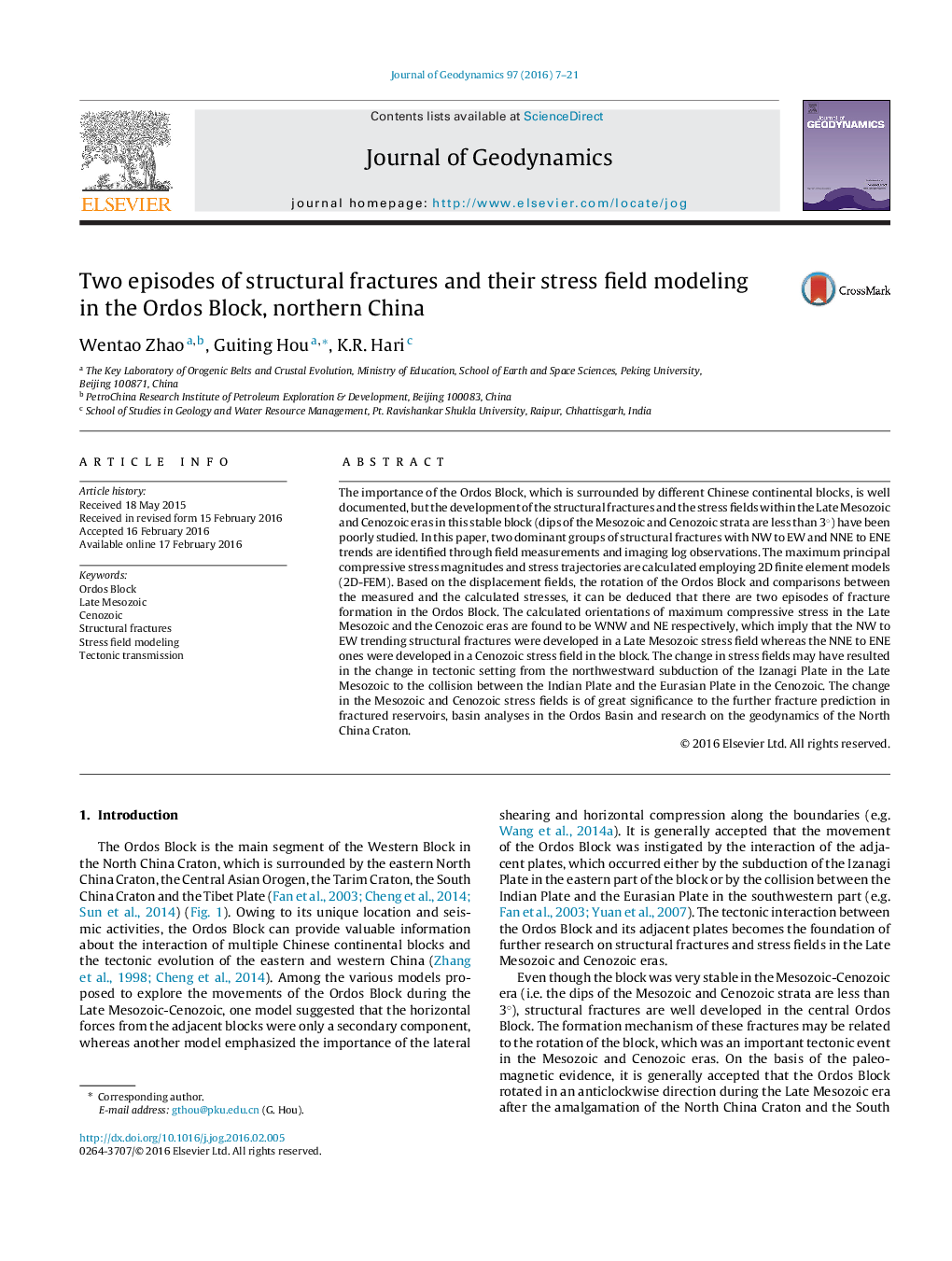| Article ID | Journal | Published Year | Pages | File Type |
|---|---|---|---|---|
| 6433084 | Journal of Geodynamics | 2016 | 15 Pages |
â¢We build up two reliable finite element models of the Ordos Block.â¢Late-Mesozoic and Cenozoic stress fields are constructed in Ordos Block.â¢Development mechanism and timing of structural fractures in Ordos Block is defined.â¢The stress fields can be used for fracture prediction and geodynamical researches.
The importance of the Ordos Block, which is surrounded by different Chinese continental blocks, is well documented, but the development of the structural fractures and the stress fields within the Late Mesozoic and Cenozoic eras in this stable block (dips of the Mesozoic and Cenozoic strata are less than 3°) have been poorly studied. In this paper, two dominant groups of structural fractures with NW to EW and NNE to ENE trends are identified through field measurements and imaging log observations. The maximum principal compressive stress magnitudes and stress trajectories are calculated employing 2D finite element models (2D-FEM). Based on the displacement fields, the rotation of the Ordos Block and comparisons between the measured and the calculated stresses, it can be deduced that there are two episodes of fracture formation in the Ordos Block. The calculated orientations of maximum compressive stress in the Late Mesozoic and the Cenozoic eras are found to be WNW and NE respectively, which imply that the NW to EW trending structural fractures were developed in a Late Mesozoic stress field whereas the NNE to ENE ones were developed in a Cenozoic stress field in the block. The change in stress fields may have resulted in the change in tectonic setting from the northwestward subduction of the Izanagi Plate in the Late Mesozoic to the collision between the Indian Plate and the Eurasian Plate in the Cenozoic. The change in the Mesozoic and Cenozoic stress fields is of great significance to the further fracture prediction in fractured reservoirs, basin analyses in the Ordos Basin and research on the geodynamics of the North China Craton.
